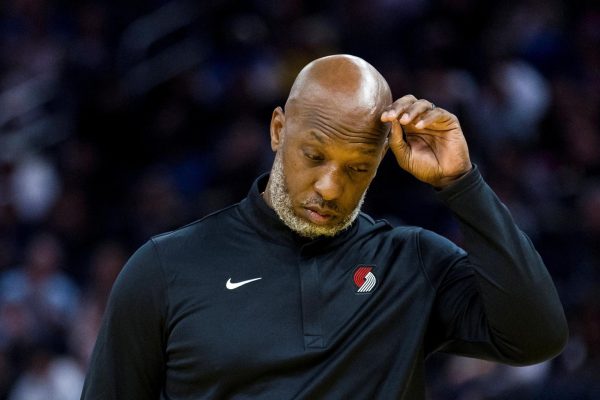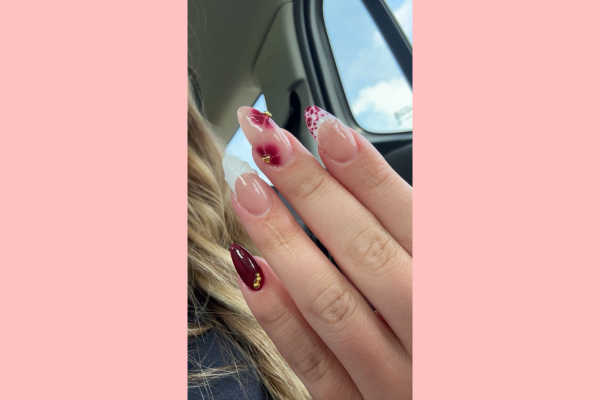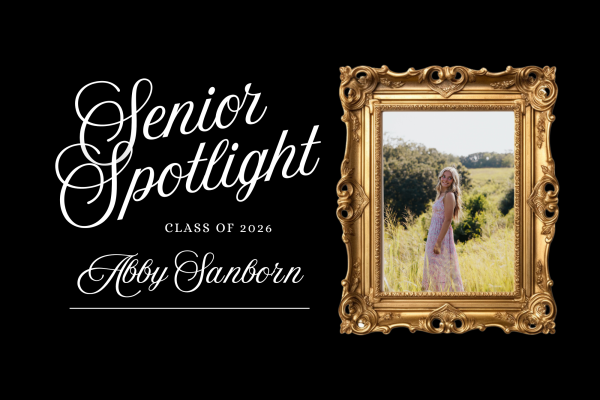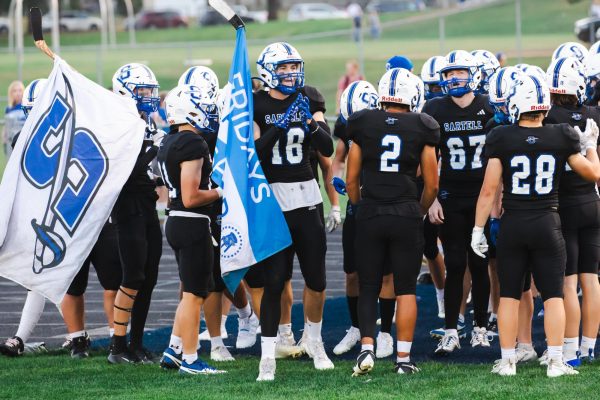SHS dress code stirs controversy
dress code
Cold-shouldered tops have brought out heated feuds amongst students and faculty.
An email, sent out by Assistant Principal Nick Peterson a few weeks ago, regarding the dress code has sparked continuous controversy since its original circulation among students and faculty at Sartell High School.
The storm of feedback to the administration’s notice on the dress code policy in the High School has consisted of protests by students and several heated debates, among other conflicts. Discussions amongst students have compromised of both negative and positive views of the language and actions caused by the current dress code.
For Emily Callan and Hannah Bous, both students at Sartell High School, it has been mostly negative.
Hannah suggests, “ I think the whole situation could have been handled better… I think the way that [the administration] went around it was crappy.”
Emily added, “I feel like, especially in high school and middle school, that although there is like a work/education atmosphere, there’s also a social component because this is the most social place they go for their whole week… this is not the time or place for more professional looking clothing like when we go to work.” They both agreed that while they disliked the current dress code, they didn’t have any answers for how to fix it.
Strict dress code enforcement has been on the rise. According to the National Center for Educational Statistics, in the last 15 years, the implementation and policy creation on dress codes has nationally gone up from 47.4% to 58.5% among public high schools in the United States. The instigation of these policies may correlate to several recent findings, including one done by Marizen Ramirez of University of Iowa, that behavioral policies, like regulations on dress code and truancy, enhance the social control and safety of schools. Ramirez concluded that schools that better adhered to their policies typically increased their social control and organization which may have even contributed to a decrease in violence on these campuses.
In the past several decades, court cases have pushed the boundaries of dress codes in schools. Title IX of the Education Amendments of 1972, prohibits sex discrimination in any public school in the United States. The Equal Protection Laws protect obvious differential treatment towards women or men. For example, it would protect a woman’s right to be able to either wear a skirt or a pair of pants to her place of employment. She couldn’t be discriminated against for doing either. It also protects men for things like the length of their hair or body piercings.
Title IX can be used to show how sex-neutral policies may have disproportionate effects, meaning that dress codes may affect women more. This is when modern dress code battles come in to play. Do dress codes single out women in their language and enforcement and can their ever be a dress code that is perfectly equal?
Sascha Hansen, Assistant Principal at Sartell High School, said that they “…are trying to make sure that [the dress code] is equitable for boys and girls…” and that “…some of the policy is written more because women are sexualized in American culture and the fashion trends are that way.”
Responding to the opposition movements she said, “I know that some girls… and guys have banded together to … get to administration… I always like to have conversations with kids, and so I’ve had quite a few really good conversations, some that have been sent to the office or someone’s reported them and others are just concerned and want to know a little bit more so I like to listen and have a conversation.”
Protest broke out two weeks ago among students just days after the email was sent out to the student body and their parents. People showed up to school donning cold-shouldered tops in objection to the dress code, with roughly 10-15 kids being dress coded that week according to Hansen’s estimate.
Whitney Shea, a senior at Sartell, understands the disapproval of the dress code, but doesn’t personally feel the need to go against it. “I guess if the school wants to do that, I’m going to pick my battles and that’s not one I need to [fight].” She continues by sharing, “I feel like you come to school to work in a sense, so I can see why there’s no crop tops and stuff, because if you were going to work you wouldn’t wear a crop top.” Despite this, Whitney reiterated, “Students should wear what they want as long as it’s not like offensive or related to drugs or alcohol.”
Becca Kucala, another senior, parallels this opinion, “I think they’re justified in some of the things that they want; I don’t think it should be a problem for people to wear tank tops and have their bra straps showing… as long as people are pretty decently covered then I don’t care that much.”
Student dress codes have historically been contentious, and protests against them have caused a momentous change in the rights of students. The supreme court case Tinker vs Des Moines essentially guarantees the rights of students even when entering the school grounds. Though this seems commonplace now, the aforementioned court case was spurned by a protest against the Vietnam War. Students, then, wore black sashes around their arms. Because of this protest the question raised was did kids have first amendment rights upon entering school. The court ultimately ruled in favor of the kids, and that it was unconstitutional for students to lose any rights upon entering their school. Without the stance on dress code taken by these students, their right would have been continually hampered.
But, is the modern stance on dress codes as necessary to the rights of students today?
Liam Zaczkowski, a senior at Sartell High School does find importance in this current effort. “I think a lot of those earlier movements defending students’ rights of freedom of expression in school, I think they were definitely a little more symbolic… to be protesting war may be culturally a little more significant, but that doesn’t mean that this isn’t important, that this isn’t a watershed moment in our views and our different cultural norms.”
Additionally, students find it unfair that they make a universal dress code on a group of people who are all different in their shapes, sizes, and identities. Emily Callan cited concerns that enforcement of the dress code was too prejudiced. “It’s such a subjective thing that that’s what makes it so difficult to gauge…girls with flatter chests can get away with more things then like girls who are bustier… girls who are shorter can wear shorter shirts and stuff because no one is going to notice as much as somebody who is like really tall.” Becca Kucala believes that if the school worked on a more “person to person basis” then the dress code would be more fitting to every individual.
Enforcement is another issue raised by Sartell students. Kassy Markey, a Sartell senior, felt uncomfortable by the idea of teachers having to report students to administration for violating dress code, “If I had a male teacher and they reported to Hansen like, ‘Kassy has shoulders showing‘ like that’s distracting. It’s like why are you so concentrated [about] my shoulders.” Ms. Hansen responded to this concern saying, “We can guarantee that teachers are not looking at students’ bodies inappropriately… The enforcement of the policy should not affect student-teacher relationships because the student does not know who reported him or her to the office.”
But for students like Liam Zaczkowski, this promise is less than reassuring. “I feel bad for the teachers too because I know a lot of teachers disagree with it, and I’m sure they feel just really weirded out having to call kids out on [clothes that are] too exposing or too lewd of clothing. I think that’s weird and the fact that it’s an adult calling out a minor for sexually revealing clothes is bizarre.”
After years of controversy, many idealists picture a dress code of perfect equity. This is what that might look like.
The Oregon National Organization of Women came out with what they believe to be a solution to the gender disparities of the modern American high school dress code. Adopted by Evanston Township High School in Illinois, this policy contains goals for a more progressive policy that is inclusive to all genders, races, and religions. It starts off stating what students must wear, with only simple words following: shirt, bottoms, and shoes. It then ends with what students cannot wear which includes a ban on hate speech, illegal activities, and visible underwear (minus straps or waistbands). The rest of the proposed policy talks about teacher enforcement training and dress coding kids while keeping their self-confidence and comfort intact, along with a push for teaching kids about sexual harassment and consent. Evanston Township was ranked in the top 2% of high schools in the nation by U.S. News & World by examining how well the school serves their students and the degree to which they prepared them for college.
While debates weather on, many students can agree that their needs to be some change.
Hannah Bous echoes this, “I think that overall, it could be changed to fit everyone a bit better. Right now the dress code itself should be ‘dress-coded’ because it’s restricting and unfitting for the students of Sartell.”
Emma Rasmussen is a senior at Sartell High School. She has an affinity for the arts, such as writing and painting. Her favorite musicians are Elton John,...









